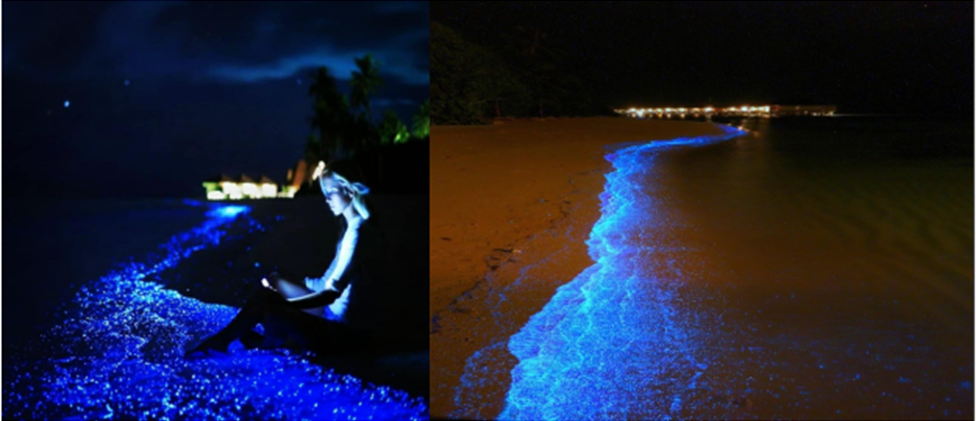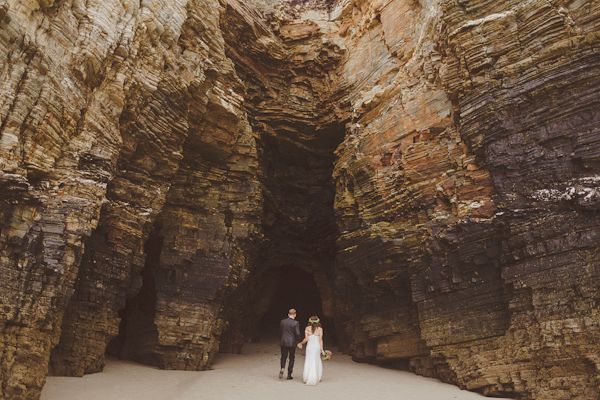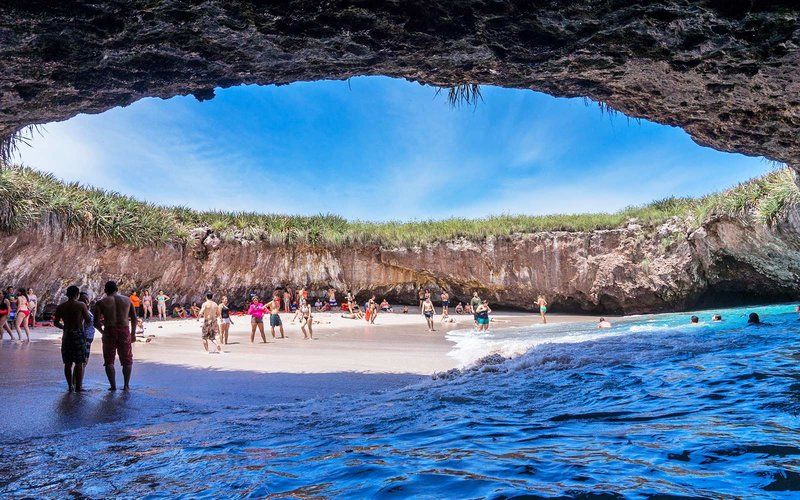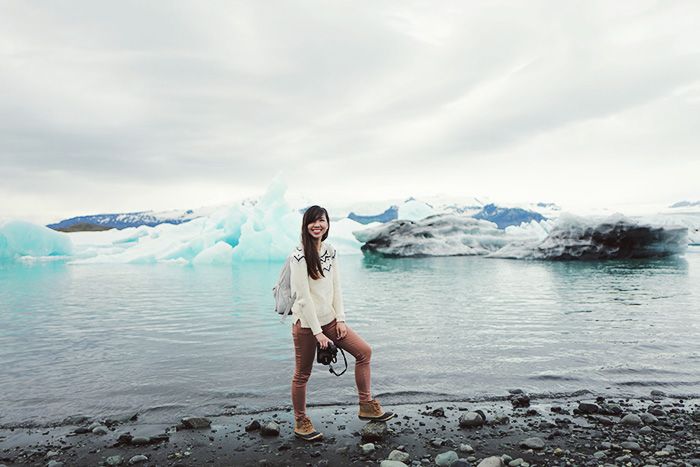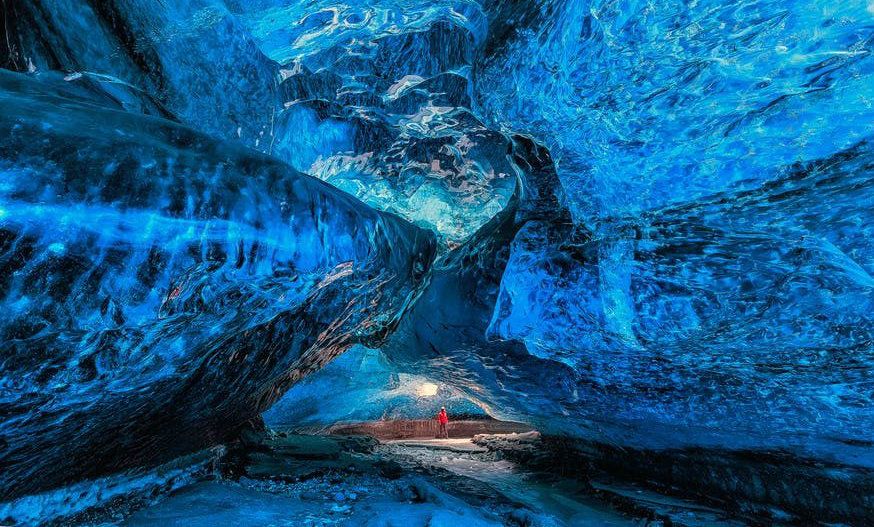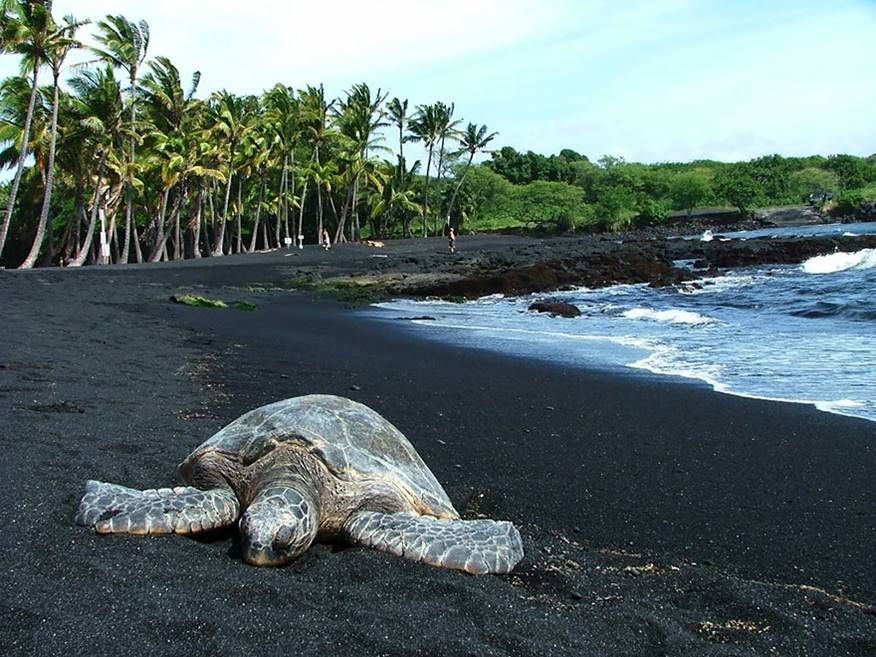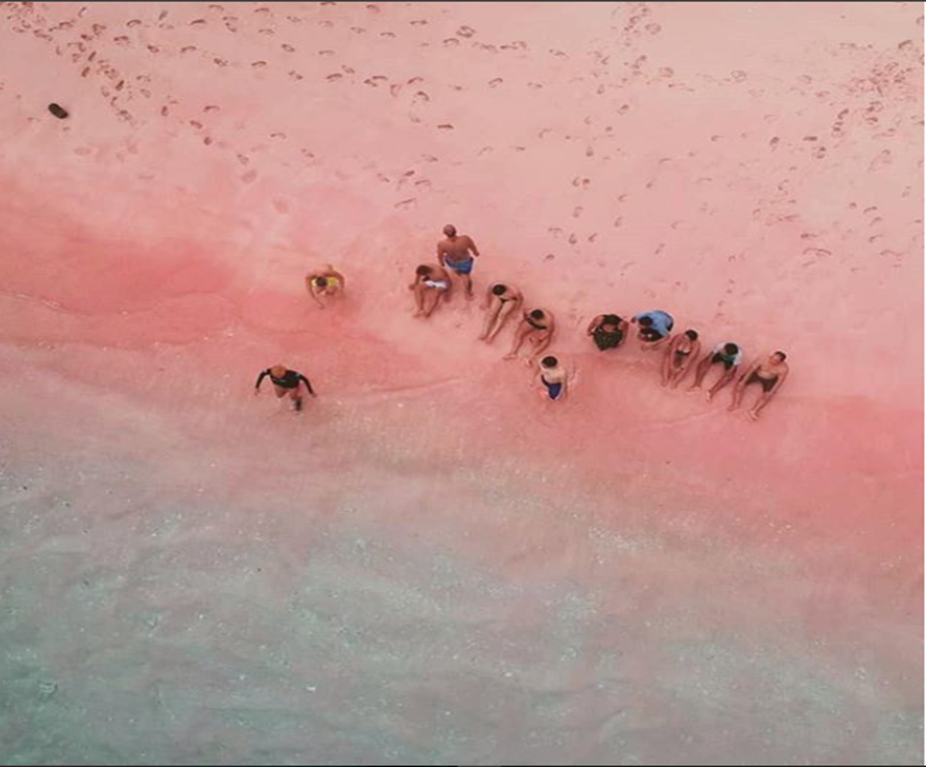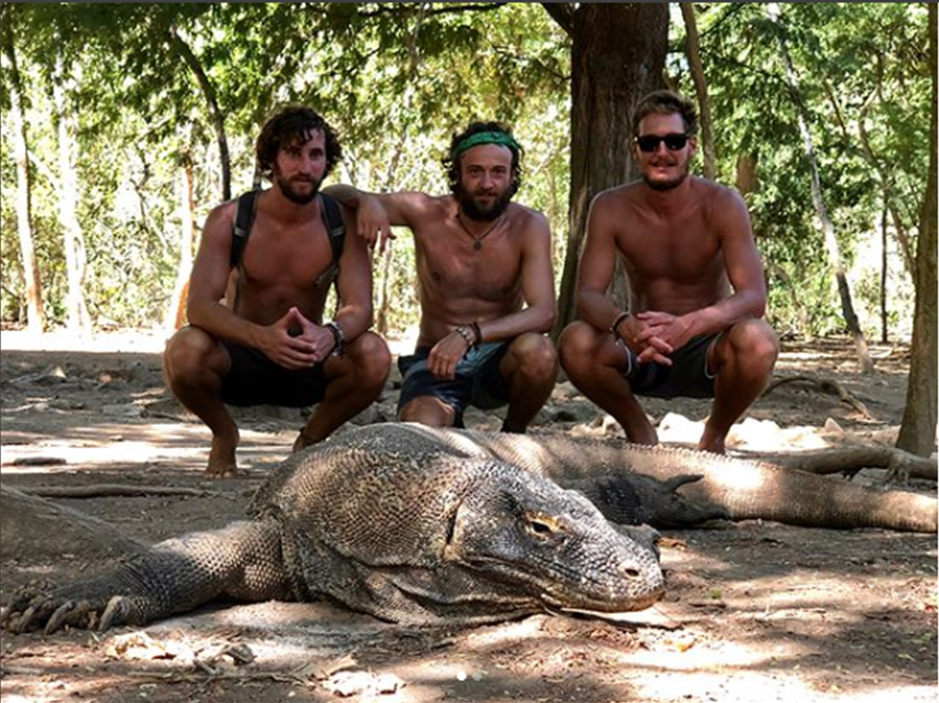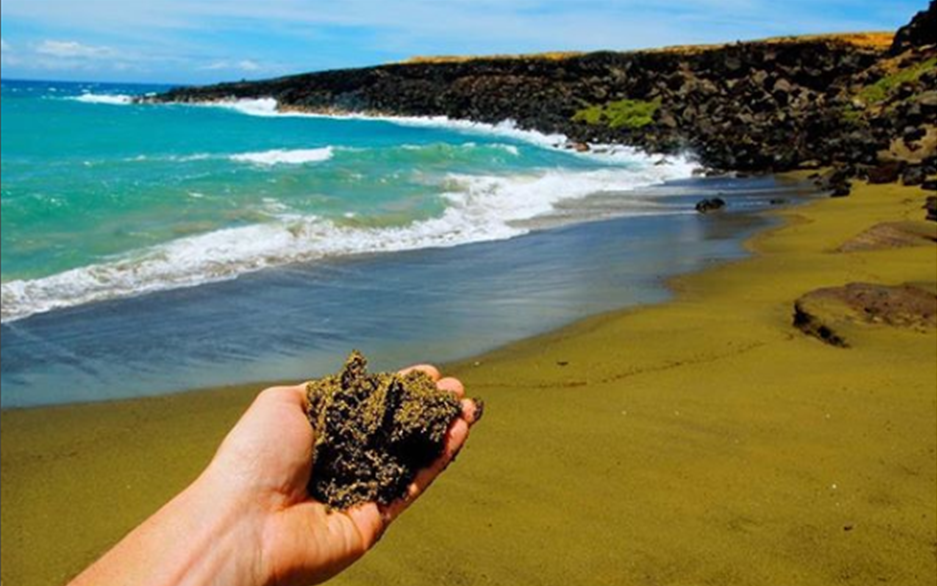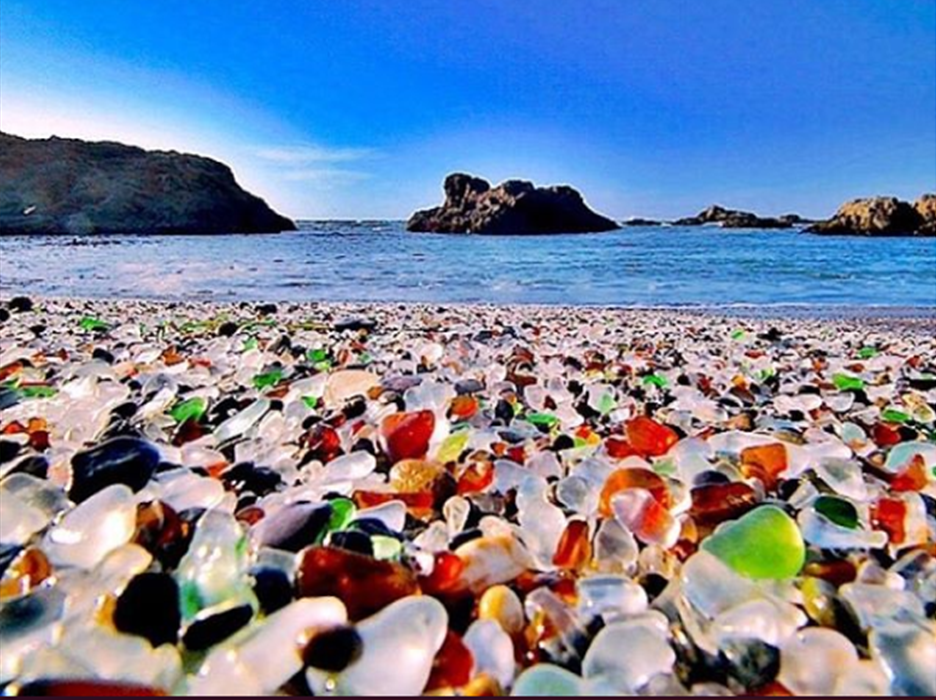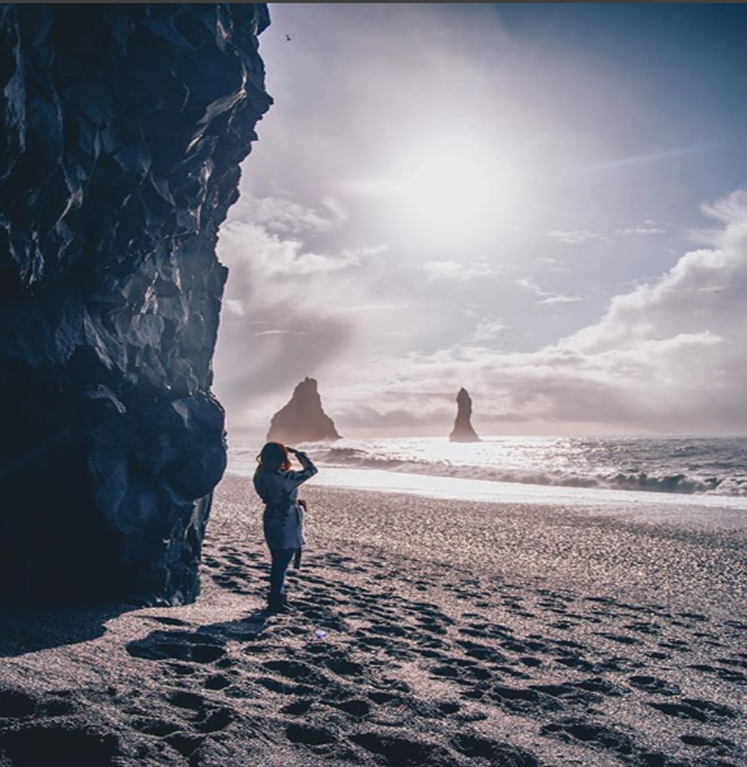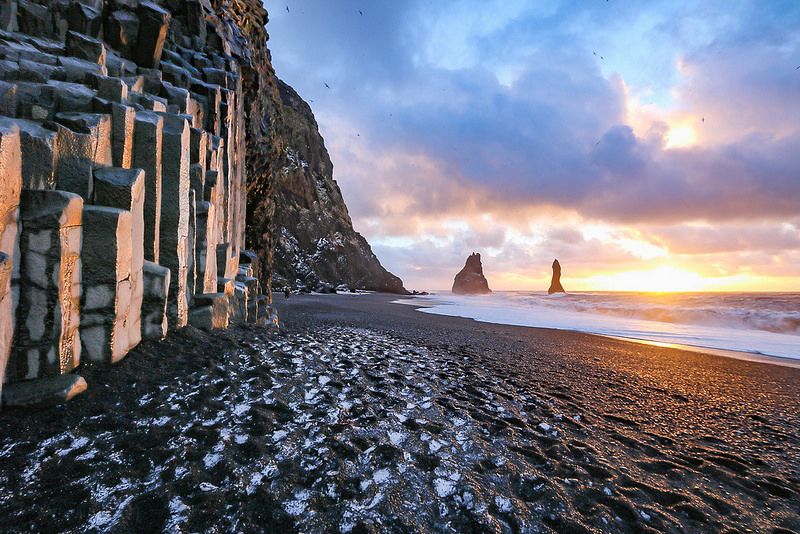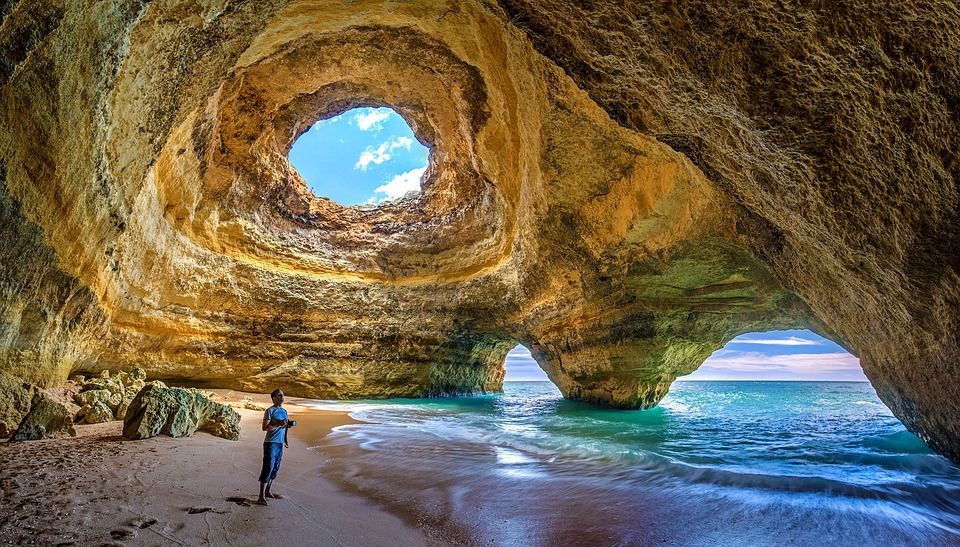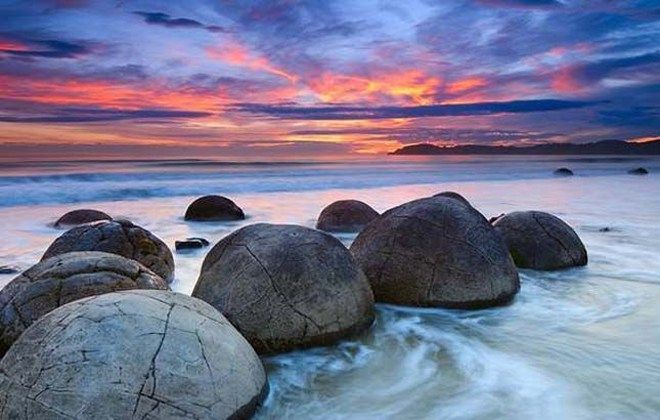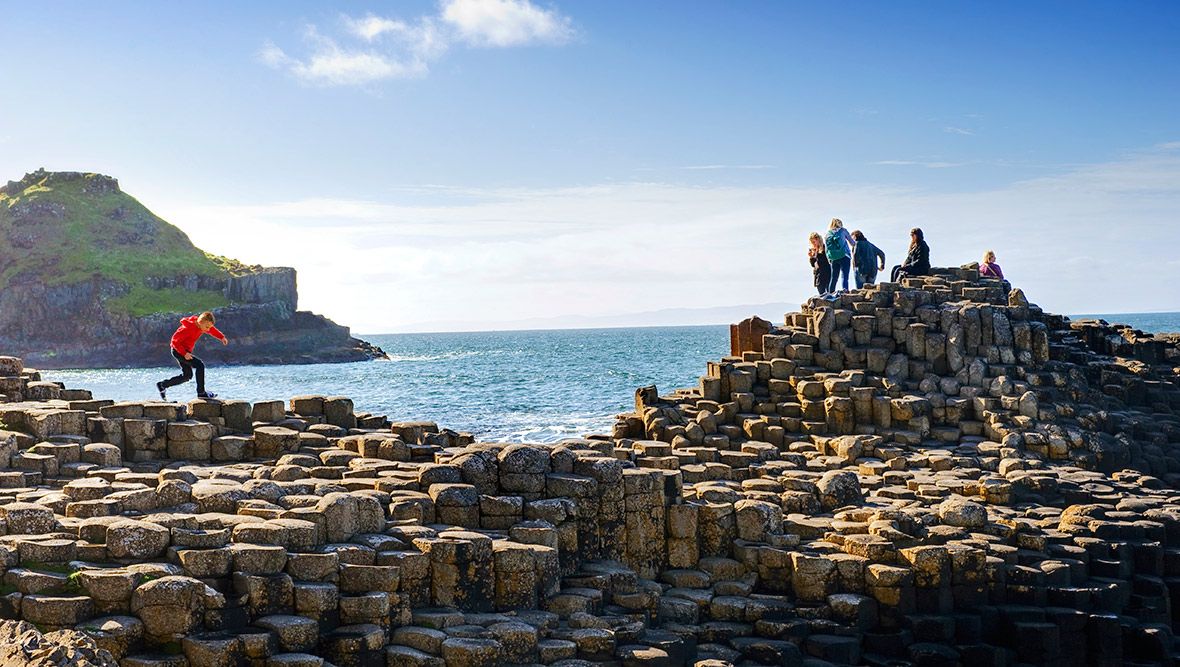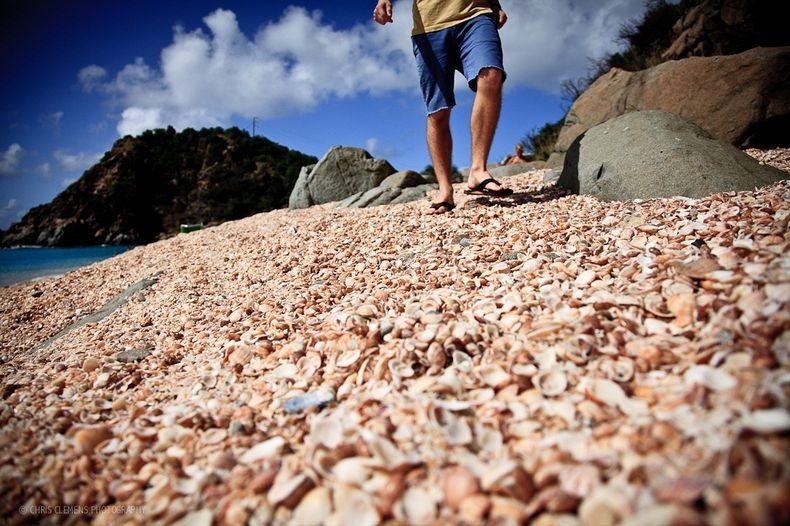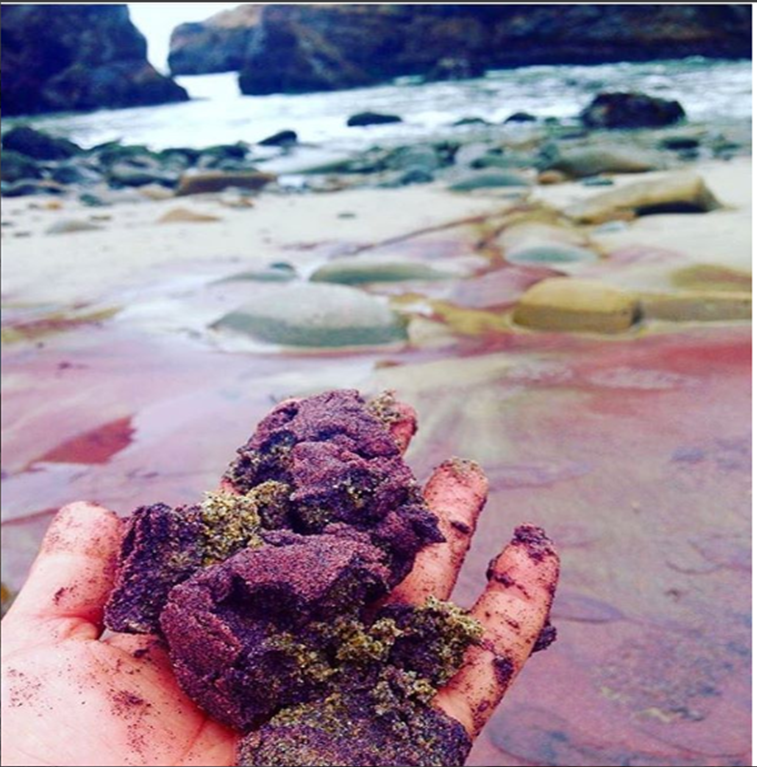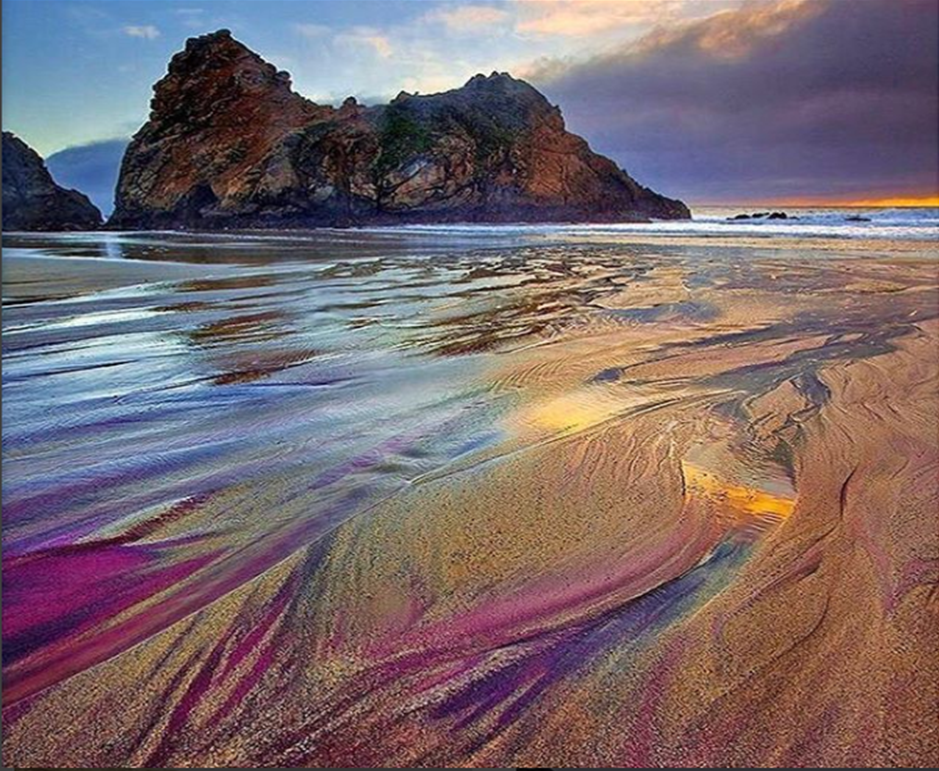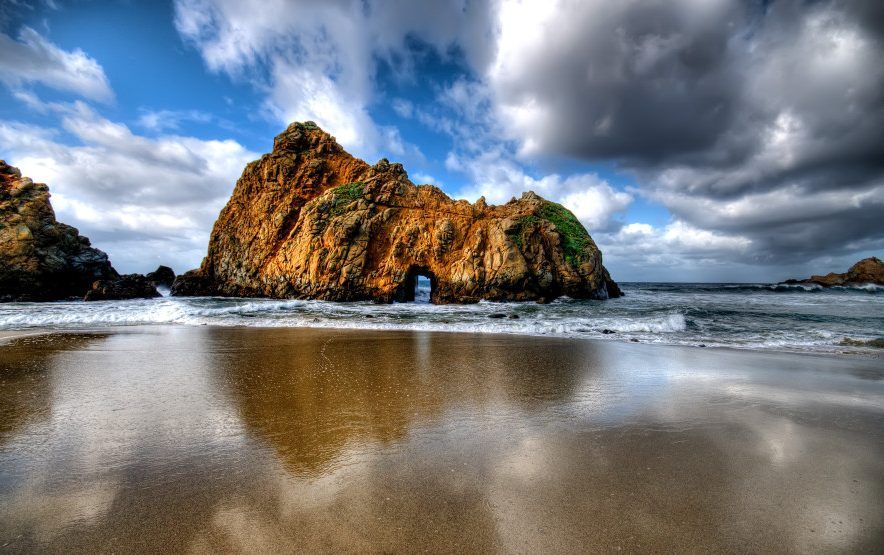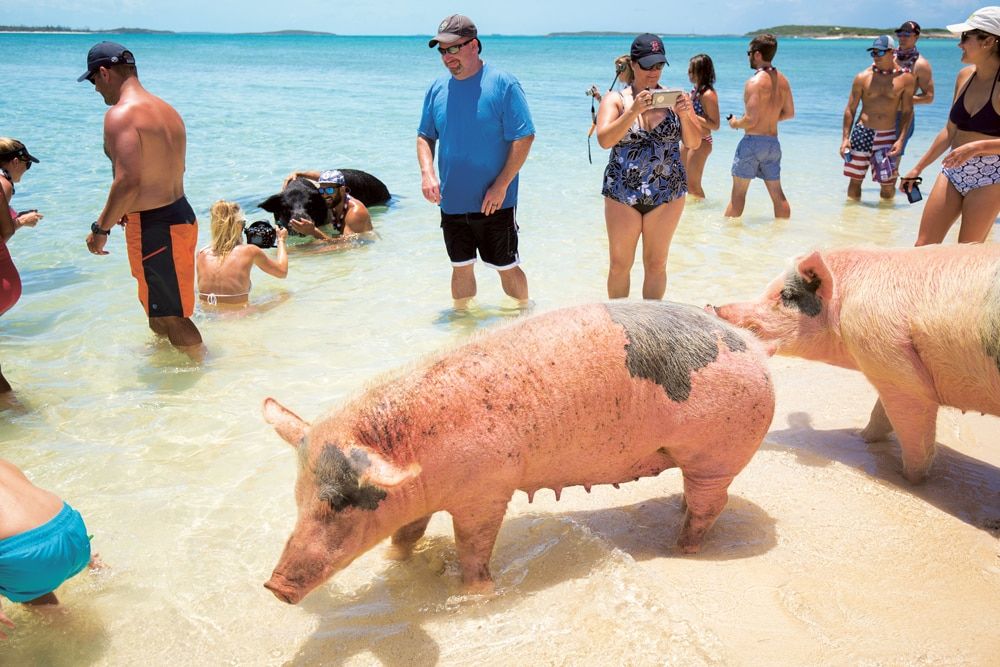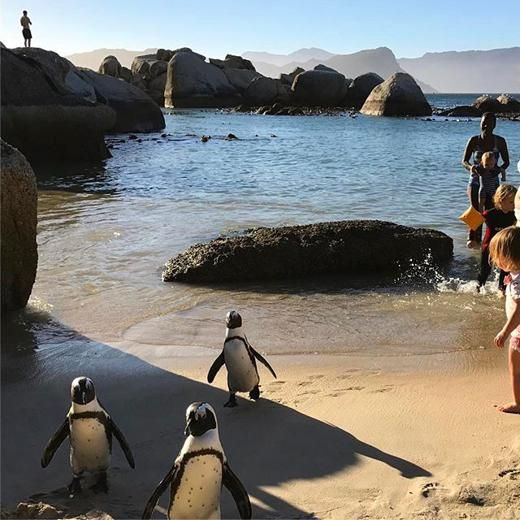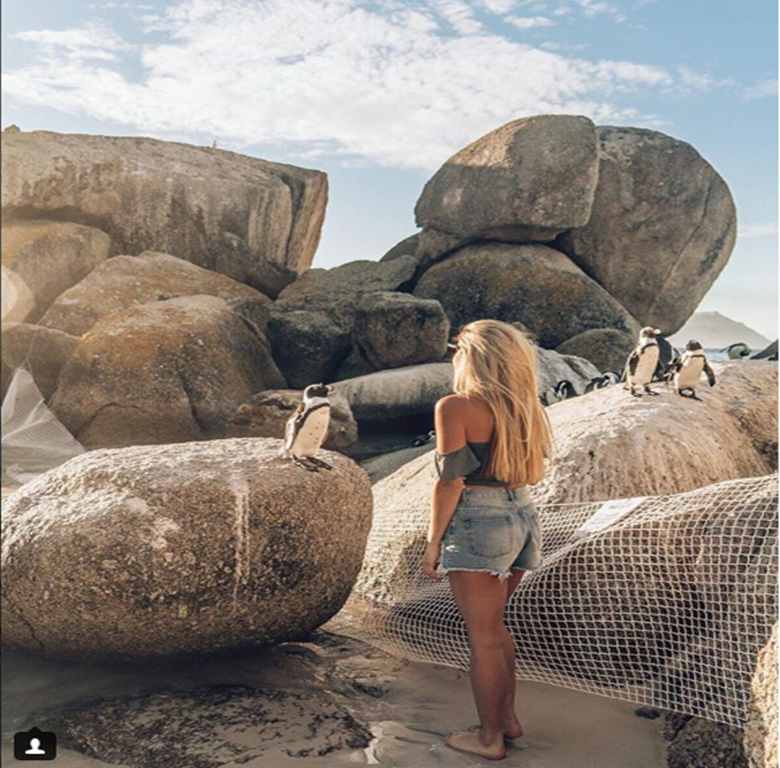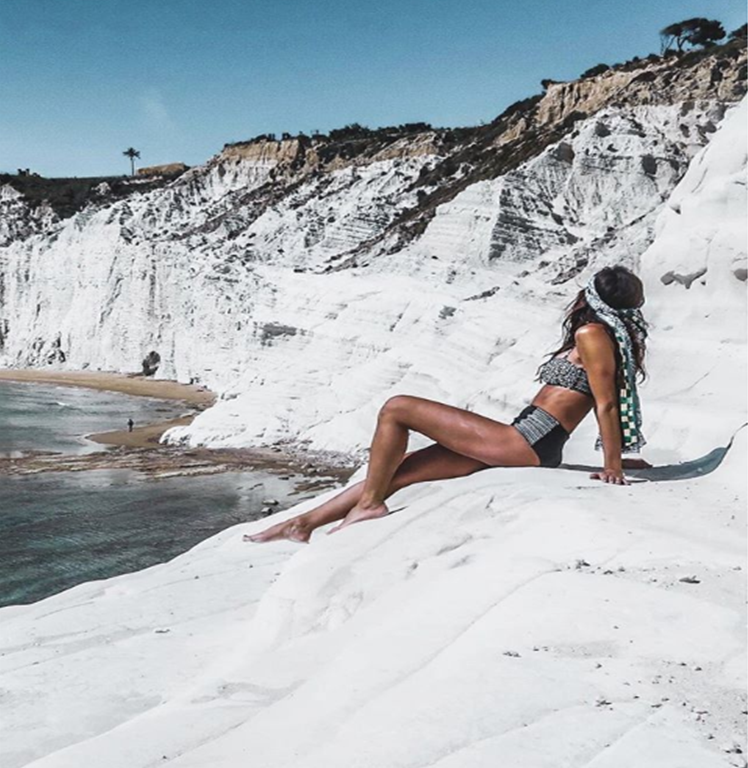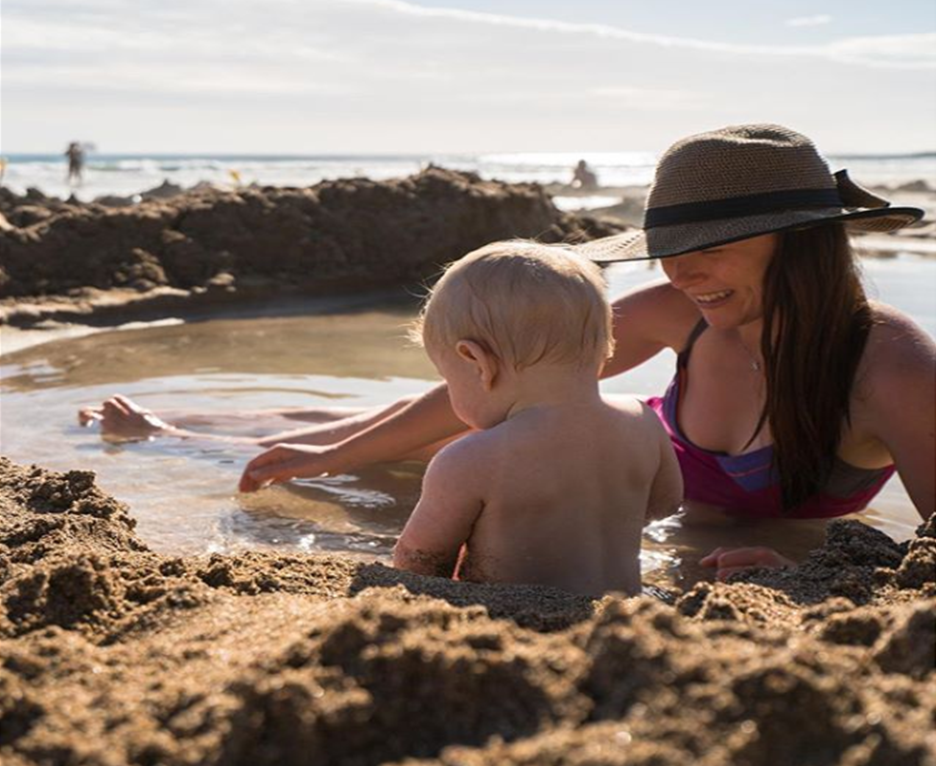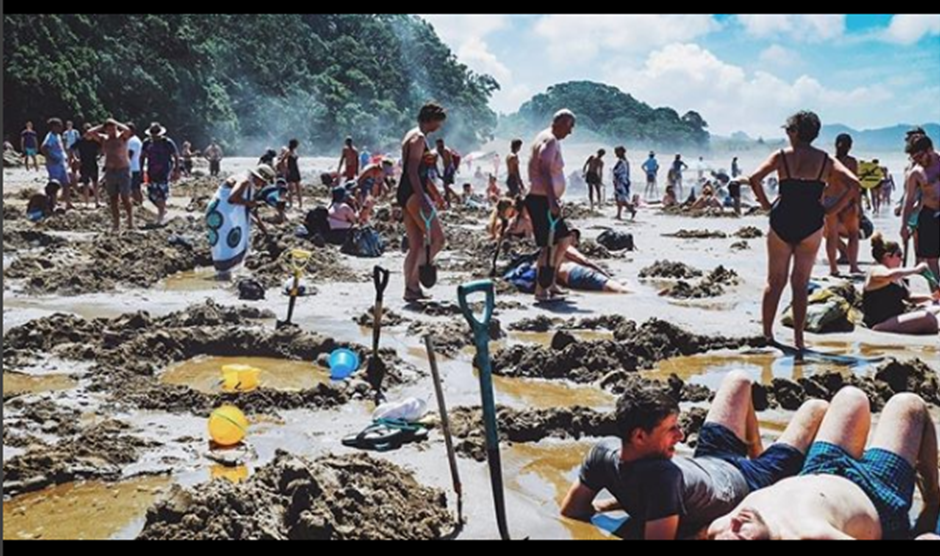It’s finally summer time. A long year of studies or work has rolled around, and you’re yearning with fancies for nice long basks with fruit cocktails under a hot sun and against the rolling waves of pristine, crystal clear, light aqua turquoise water. While for many this may constitute the ultimate beach experience, what you may not know is that beaches come in far greater varieties and forms (even colors) than this classic beach image. To mention a few, beaches can come in the strangest of colors, from pink to purple to green. Some have four-legged creatures vacationing and sunbathing alongside humans (only without sunglasses though). Other "beaches" are either away from the sea or at the sea yet have no sea water at all. The photos you are about to see prove that Mother Nature could have some real surprises in store for her sons and daughters. So if you’re looking for something a little different from your traditional beach experience for a honeymoon or just a wild adventure, here are 25 of the most exotic, most unique, and most wonderfully weird beaches on the planet.
24 Vaadhoo Island, Maldives - The Sea of Stars Is Like A Scene Out Of Avatar
Glow with the flow - Here in Vaadhoo Island the Indian Ocean glows as it flows. The Maldives, “a place where your soul can be free and your dream becomes a wondrous reality”, is also the sight of this otherworldly “sea of stars”.
It may seem to be a scene from Avatar, but it is right here on our Earth: sea water turns into electric neon blue on the shores of Vaadhoo Island in the Maldives. As supernatural as this may seem, it is actually a very natural phenomenon.
The culprit is bioluminescent phytoplankton; in a chemical reaction called bioluminescence, microscopic creatures called phytoplankton glow when interfered by oxygen. This glow is like a defense mechanism which wards off other marine organisms from eating them, and they will continue to glow inside any fish that eat them. These vibrant organisms, too small to be seen with the bare eye, nevertheless huddle together to put on quite a light show at night.
Note: This is TOTALLY real life - may we suggest getting down to the Maldives as quickly as possible?
23 The Beach of the Cathedrals (Ribadeo, Spain) - Nature's Version Of A Cathedral
Located on the northern Spanish Galician coast is a stretch of beach land packed with exotic geological formations. Officially called the “Paria de Augas Santas” (Beach of the Holy Waters), this beach is more commonly referred to by locals as the “Beach of the Cathedrals”. The name is derived from the extraordinary rock formations resembling the arches in Gothic cathedrals. The walls of this cathedral were formed by the constant pounding of the Atlantic waters over thousands upon thousands of years. This natural cathedral is only visible during low tide however. According to Atlasobscura, these arches could reach up to 90 feet high yet become completely inundated during high tide. But when the waters recede, a world of cathedral arches and caves is unveiled, as if by divine revelation.
Visitors come here to admire the handiwork of nature's ecclesiastical architecture. Others perhaps come to get a touch of the divine in a new setting. Whatever lures you here, make sure you check tide times and to plan your trip during low tide. If you come during high tide, you’ll find the cathedral, with its arches and caves, under a Noahic-like deluge.
22 Hidden Beach Island (Mexico) - Your Own Private Swimming Pool
The seasoned traveler knows that travel gems are not easy to find; they are often off the beaten path. The Hidden Beach of Mexico will take you some trouble to find, but what you'll find in this natural, hidden open-air sea swimming pool is mind-blowing. Coral reefs here feature unique fauna and flora that you wouldn't find elsewhere, making for a fabulous snorkeling spot.
To get here, there is some work to be done; you’ll have to swim or kayak through a long water tunnel that links the beach to the Pacific Ocean (an adventure in its own right!). But there is light at the end of the tunnel (literally).
The beach, which is completely engulfed in a cave, has a massive hole in the roof that lets in sunlight (which leaves you wondering if it was formed by a meteorite or something). In fact, there are some rumors that the hole may have been the result of deliberate bombings during World War I.
As the Marieta Islands have always been uninhabited, they would have been ideal sites for military testing by the Mexican government during the war.
So the natural wonder may not be so natural after all. Still, it is certainly quite a wonder of a beach and well worth a visit!
21 Maho Beach, Saint Martin - Hold Onto Your Hats At This Airport Beach!
This looks like your normal “classic” beach, until a plane nearly knocks your head over. With the whole island country of Saint Marten being just 37 km square, the airport cannot possibly be too far from the beach. The beach is so close to the Princess Juliana International Airport that it would seem like you could practically jump up and touch a plane. Well...not quite...but close.
The planes reach an altitude of just 30m above sea level. The beach is very popular with plane spotters as it is one of the few places in the world where planes can be viewed in their flight path just outside the runaway. Watching airliners pass over the beach is such a popular activity here that daily arrival and departure flights are displayed in most bars and restaurants on the island.
Furthermore, a popular beach bar and grill called Sunset Bar & Grill even had a speaker on its outside deck that broadcast radio transmissions between pilots and the airport's control tower. Another activity that is sometimes seen out here is hanging on a fence surrounding the plane runway in order to experience being blasted by the jet flow.
While experiencing the thrill of an adventure in this unique beach, just remember to be safe as the force of a roaring plane has caused injuries before to the heedless, showing the importance of some wisdom and precaution while being in such a unique setting.
20 Jokulsarlon, Iceland - A Mars Beach, on Earth
A beach in Iceland?! You wouldn't expect that to be very sunny! Yes, it is cold, but the Jokulsarlon beach has some magic of a different kind, which - though a very different experience very from your tropical beaches - is still quite magical.
Off this beach in southeast Iceland icebergs float and drift toward the Atlantic. This surreal place teaches us what glacial beauty means. Black volcanic sand provides a contrasting backdrop to the pieces of ice that liter the shores. The pieces of ice, thousands of years old, glisten in the sun, which has led the nickname "Our Diamond Beach" to catch momentum among locals.
This place is Iceland's most popular filming location; it was the setting for scenes in such James Bond movies as A View to Kill and Die Another Day as well as Tomb Raider. Batman Begins and Interstellar were also shot here, not to mention a number of other popular commercials and music videos (Bon Iver's Holocene, Justin Bieber's I'll Show You and the music video to Gerua from the Bollywood Diwali movie).
Do not expect to swim in the freezing waters; however you may take a guided boat tour (they are the exact same boats used in Tomb Raider!). While you're here you'll also want to explore the spectacular blue ice caves within the glaciers.
In sum, Jokulsarlson indeed offers a very different beach (certainly quite distinct from your traditional beach!), but you'll find it a winter wonderland hard to find elsewhere!
19 Black Sea Beach (Punalu'u, Hawaii) - I Wonder How Many Beauty Products Are Made From This Stuff
Imagine a tropical beach where turquoise sea waves batter on a shore lined with lush greenery with coconut and palm trees, except that the sand is jet black. This is Punalu’u, Hawaii’s most famous black sand beach. Black sand could get quite hot under the sun; if that happens you can always retreat to a coconut tree, whose shade would be the perfect haven from the hot the asphaltic treasure.
In addition to the black lava shore, the beach has other special guests that make this place even more special. Sunbathing turtles are a common sight here, enjoying the warm black sand and the hot sun.
Turtles here are mostly of the Hawaiian green sea variety (Honu). But if you're lucky, you may also encounter the more rare Hawksbill Turtle (Honu’ea) in the water but not basking on the beach. Fun turtle trivia: According to LoveBigIsland, sea turtles almost never bask on the beach. However, some species of green sea turtles do this but only at a few locations worldwide, one of which is Hawaii.
As cute as the four-legged crawling creatures could be, keep your distance; they are an endangered species and are protected by state and federal law.
18 Red Sea Beach (Kaihalulu Beach, Maui, Hawaii) - White Sand Gets Way Too Much Attention These Days
Sure, white sand is great. But Maui island has got sand you've probably seen nowhere else. This Hawaiian beach is one of the very few red sand beaches in the world. Like many of the little-known, off-the-beaten path beaches, Kaihalulu is greatly isolated, requiring a short yet perilous hike to reach. (Because of its isolation and difficult access, some of its frequenters consider it clothing optional).
The beach gets its name from kai halulu which means "roaring sea" in the Hawaiian language, but the highlight of this place is without a doubt its signature red-black sand. This - along with the greenery and black lava rock in the background - make for an unreal canvas of art.
Add to this the two predatory birds that make this place their home: the Iwa and Koae Kea. The soaring, wild, Jurassic-like birds hovering in the skies above add a prehistoric feel to the place, transporting you millions of years back to enjoy a beach afternoon in the primitive Earth.
17 Pink Sea Beach (Lombok Island, Indonesia) - A Fairytale Setting, But Watch Out For Dragons
Forget the snow-white or jet-black sand; this fairytale-like setting is for travelers seeking the fanciful and the unreal. According to Indonesia travel, this is one of only 7 pink sand beaches in the world. (Lest you think otherwise, this was not a massive dying project the Indonesians worked on to boost their tourism industry). The pink color is derived from microscopic animals called foraminifera, which produce a red pigment on the coral reefs. When the tiny fragments of red coral combine with the white sands, the result is the dye-like property of the shoreline.
Besides indulging in the pink sand, the beach is the perfect spot for a leisure swim and water sports. The more daring could go on an expedition to explore the island's native inhabitants: the Komodo Dragons, which are wild giant lizards that could grow up to 3 meters in length and as much as 100 kg in weight
16 Green Sand Beach (Papakolea, Hawaii) - There's Only Four Worldwide
Maybe black, white, or pink is not your favorite color; perhaps you're more of a green fan (I don't mean the NFL Green Bay Packers). If so you may like the aquamarine olive hue to the sand in the photoshopped photo above...except it is not photoshopped. Green sand exists, at least on Hawaii's Papokalea beach. According to Travel & Leisure, this is one of only four green beaches in the world. The official name of the beach (Papakolea) means ‘plover flats’ in native Hawaiian, named after the Pacific golden plover which picnics and vacations here too. Despite its isolation and difficulty to reach, hoards of adventurous travelers, like the Pacific plover, show up on this beach, drawn by the its idiosyncratic hue.
This peculiar green color of the sand is due to a mineral called olivine spitted out from neighboring volcanoes, from where it flows into the sea and gets washed up on the shore.
Take the time to hold some sand and inspect it closely; it is quite awe-inspiring! But make sure not to break federal law through plundering any green gems with you.
15 Glass Beach, California - Your Classic Tale Of Trash Into Treasure
Sparkling brightly at Fort Bragg's Glass Beach in California is a colorful and delightful sea of glass.
From 1906 to 1967 everything from cars to batteries to bottles were pushed over cliffs into ocean, which was a traditional practice for seaside cities for centuries. Mother Nature took this and handed us an exquisite gift, and in 1949, the site's label changed from "Dump Site" to "Glass Beach".
Do not worry about the glass piercing your bare feet here; the battering sea waves have smoothed out the rough edges of the glass. Unfortunately, this is one of those once-breathtaking places ruined by tourists. Formerly there were great piles of multi-hued, perhaps multi-layered, glass scattered everywhere, but as the beach grew in popularity and started drawing more tourists (currently more than a thousand visitors/day during high season), the pillaging was on a roll too. There are currently initiatives under consideration to replenish the glass reserves of the beach.
While you’re here you’ll want to search for rare ruby reds. Another highlight of the beach is the endangered hybrid Menzies' wallflower. Do a little scavenger for the gems and snap as many photos as you want, but you are kindly asked not to carry away any of the glass treasures on your way out.
14 Reynisfjara Black Sand Beach, South Iceland - For Those Who Want To Imagine Intergalactic Beaches
Like Jokulsarlon, this is another extraterrestrial beach on Earth. This Martian setting, complete with its hidden caves and folklore stories, was ranked among the top ten non-tropical beaches in the world in 1991. It is rather common to have black sand beaches in Iceland (formed from volcanic lava), but the sand here is not like the smooth ticklish black sand we saw above in Papokalea Beach.
The beach here is covered with various sizes of shiny black pebbles & stones; it is rugged and wild. You may also come across natural basalt pyramids in the shape of heaven-bound staircases, beautiful natural edifices. Climbing these columnar rock formations is not too difficult, and the view on the top is quite a motivation.
Remember that this is not a swim beach; beware of sneaker waves that could pull you into the sea unawares. Also while you're here, you should drop by Vik í Myrdal and feel the warm welcome of the locals at a local Icelandic village.
While this is not a tan beach (it is more look than touch), this beach is one of the most unique in the world. The apocalyptic scenery here truly makes you feel you're on another planet.
13 Cave Beach (Algarve, Portugal) - Incase You Forgot Your Umbrella
A cave beach? It doesn’t get more exotic. The streak of the intermarriage of different landscapes continues with Algarve after Korou (the grass beach presented earlier). This natural cave/beach is a Portuguese must-see. It is also another incredible cathedral of the work of nature, thus being a testament to the power of the wind and the waves.
With a hole in its domed ceiling (doesn't seem to be the work of a bomb or meteorite this time), the cave allows for the perfect amount of sunlight to seep in while the whole structure provides shade from the sun (in case you forgot your umbrella).
Actually it may not be very easy to bring an umbrella as you can only access this beach through water. Continuing your water journey, you should make some short swim excursions to check out some of the other cool caves and cave beaches nearby. Finally to conclude your swim afternoon, you will want to try the Sul Mar restaurant (about 1km away) as it offers exquisite local food in a beautiful Mediterranean sea-bound setting.
12 Koekohe Beach, New Zealand - A Dragon Eggs Beach
Any Dragon Ball fans in the house? Well, whether you're a Dragon Ball fan or not, Koekohe beach is sure to jaw-drop you. Spread across like marbles on this New Zealand beach are some gigantic mysterious dragon-ball-like boulders. Each of these Moeraki boulders weighs several tonnes and could be up to 2 meters high. The native Maori call them Hooligan's Gallstones.
According to science, the boulders are calcite concretions formed around 65 million years ago in ancient sea floor sediments. According to Maori legend, they are gourds washed ashore from the great voyaging canoe Araiteuru when it was wrecked upon landfall in New Zealand hundreds of years ago. However they were formed, they are now lying on the unremarkable sands of Koekohe, looking as alien as igloos in India.
Nevertheless, something tells us that their awkward presence does not bother us at all, maybe - just maybe - because of all of the visual and photographic delight they generate for us. According to moerakiboulders.com, early morning and late afternoon are the prime times for photography, when brilliant soft sunlight strikes the rocks, making for wonderful photographic opportunities.
Enjoy the view, the photos, and perhaps a tinge of your childhood mystery game memories brought to life!
11 Giant's Causeway Beach, Northern Ireland - Nature's Version Of Lego
You'll find nothing modest while touring Antrim’s coastline in Ireland, but this beach definitely stands out as the highlight of the show.
Standing on the green hills that surround this place and looking down, you will observe some 40,000 breathtaking polygonal, regularly-shaped basalt columns that form a pavement along the sea.
This awe-inspiring natural architecture has inspired Irish legendary narratives, which relate that Fionn – an ancient Irish warrior – was insulted by Benanndoner – the ancient Celtic God of combat. Fionn then built a path to use as stepping stones to reach Scotland, which was then ripped by Benandonner; hence the Giant’s Causeway.
Besides inspiring legends, this unique place has drawn in visitors for more than three centuries, following its discovery by Bishop Derry in 1692. Recently, the geological marvel that it is, Giants Causeway has been added to the coveted list of UNESCO’s World Heritage site list.
According to UNESCO, geological studies over the last 300 years here have greatly contributed to the development of the earth sciences. These studies show that this landscape was caused by volcanic activity some 50–60 million years ago.
So as you blithely hop over these hexagonal columns, contemplate and appreciate the fascinating geology that have inspired both science and legend for the longest time.
10 Shell Beach (Shark Bay, Australia) - If You Like Collecting Shells, Stay Away
Another UNESCO World Heritage site, this is a treasure house of shells. Billions of shells lie here, entirely covering this beach for a whooping 70 km and a depth of up to 10 m (a sea in its own right!). Shell beach is one of only two beaches in the world where shells entirely cover the beach (no room for sand here!). Needless to say, if you are a cockle clam aficionado, it might be wise not to hang around here, for fear that your affections would turn into uncontrollable addictions.
The massive amount of shells is due to the exceedingly salty nature of the waters, which do not allow natural clam predators to live here; thus their population balloons out of control. Before Shark Bay became a World Heritage Site, the shells were quarried and hard packed, cut into blocks and used to construct a number of buildings. Among these are the Old Pearler Restaurant, which can still be seen today and is not too far from the beach.
If this wasn’t enough of an attraction, the hypersaline water itself makes for a delightful swim experience. The salty waters allow you to float with barely any effort on your part (much like the Dead Sea in Jordan). If you do not know how to swim, this might be your chance to delude yourself of your dormant swim abilities that you knew you always had.
9 Pfeiffer Beach (Big Sur, California) - No Food Coloring Used Here, We Promise
No, no one spilled grape-fruit punch here (in case you were thinking) . The purple sand, certainly the highlight of this beach, is due to the manganese garnet (a type of mineral) found on cliffs by the ocean.
According to the Huffington Post, Pfeiffer beach is "the most majestic - and under-appreciated - piece of shoreline on the whole West Coast". The beach is pretty chill and low-key; there are only four picnic table to greet you upon arrival. But people come for good reason; the further north on the beach you go, the more purple the sand becomes.
There is also the gorgeous massive Keyhole rock arch, which lets in sunlight as well as saltwater. Finally the water at Pfeiffer turns turquoise in the sun and shows shells when the tide runs out.
As many other gem-beaches on our list, the path to Pfeiffer may be a tad arduous and hard to find. But you'll soon discover that it is well worth the trouble once you make your purple castles and take the photos that will wow you all day .
8 Pig Beach, Bahamas - A Day In The Sun With Babe (Yes, I Mean The Pig)
You step on the white sand beaches of the Exumas in the Bahamas, and you notice footprints that do not look familiar. They clearly are not humans’. Turns out there are others besides humans who like to go on vacations and enjoy a tan on the gorgeous Bahamas beaches. One difference though: the boars here, unlike the humans, have embraced a life of perpetual vacationing; they have adopted the beach as their perpetual dwelling place, from generation unto generation.
But how did the pigs get over here? No one knows for sure. It is certain that these pigs are not native to the land, but is not so certain how they got here. Some suggest that expedition sailors have brought them back in the day to be roasted and consumed later. Others speculate that following a shipwreck pigs on board swam to the nearby shore. Whatever the reason, we can be thankful now that Big Major Cay (or Pig Beach) now has some 20 pigs and piglets.
As you strike friendships with these swim partners (whose swimming abilities will impress you), be mindful of the fact that the health of some of the pigs was compromised due to the consumption of tourist food admixed with sand, so be prudent in what you provide and how you provide it.
7 Boulders Beach (Cape Town, South Africa) - Time To Meet The Penguins
Boulders Beach is one of Cape Town’s most visited beaches and the only place in the world where you can get this close in the open air to the little tuxedoed waddling creatures. These are Africa's very own African penguins. These crowd pleasers, like the carefree pigs, have formed a colony of their own on Boulders Beach. Their swimming abilities, like those of their boar counterparts, are bound to humble you.
Interestingly, these African penguins are also said to live under houses and hide under cars in the town of Boulders; they are not at all bothered by the urban setting. As much attention, popularity, and photo coverage the cute penguins with their waddling glory enjoy, they're not the only attraction on this beach.
Massive granite boulders, somewhat similar to the Moeraki boulders, protect the beach from wind and sea waves, and they are quite a sight here. Kids love to climb over them and explore the rock pools. It is from these large granite boulders that Boulders Beach derives its name.
6 Scala Dei Turchi, Italy - A White Mountain Beach
It is not your traditional white sand beach. It is rather a white mountain beach, a beautiful rocky cliff right by the sea, making for a beach experience like nowhere else. This fabulous beach has earned a place too on the privileged UNESCO heritage list. Scala Dei Turchi in Italian means “stairs of the Turks”; historically Turkish pirates frequently climbed up these staired rocks to raid nearby towns.
The “stairs” here are formed by eroded marl, clay and silt similar to calcite and limestone. There is much to do over here. If you're thinking of climbing the cliff, be sure to get some shoes with traction to be able to climb up the slippery chalky, white cliff. In addition, a tradition in this beach is to get a ‘marl-bath’ because of its purported virtues for human skin.
Finally, the place offers some incredible spots for crazy cliff jumps into the deep warm buoyant waters of the Mediterranean. The icing on the cake for this place must be the sick sunset view from the top of the cliff. As you contemplate this magnificent scene, just relax and let your burdens be washed by the gentle waves of the Mediterranean.
5 Hot Water Beach (Coromandel Peninsula, New Zealand) - Dig Your Own Spa
Hot water beach, with its natural sauna facilities, is one of New Zealand's most exciting places to visit. With its blazing sand underneath, relentless waves, and deep underground pools, it is certainly one of the most dramatic attractions of the country. Hot Water Beach is a white beach that overlooks the Pacific with Pohutukawa cliffs all around. But as The Coromandel reports, the beach has achieved cult-like status (both among locals and tourists) because of the patch of thermal water bubbling underneath the surface of the sand.
An underground river of hot water flows from the interior of the earth to surface in the Pacific Ocean at Hot Water Beach, leading to water as hot as 64 degrees Celsius just beneath the surface. Here in a 20-meter radius hosts of children and adults alike industriously dig their own small spas to access the prized water, then lie down in the fruit of their labor while steam from their hot pool envelopes them. Others are lucky to soak in the fruit of the labor of others.
With the cycle of low and high tide, each hard-dug pool is washed away, clearing the way for the next wave of enthusiastic visitors.
You should plan to visit during low tide; two hours of either side of low tide witnesses the flocking of visitors. Oh and do not worry about spades; they are offered by local cafes and bars on the beach!

